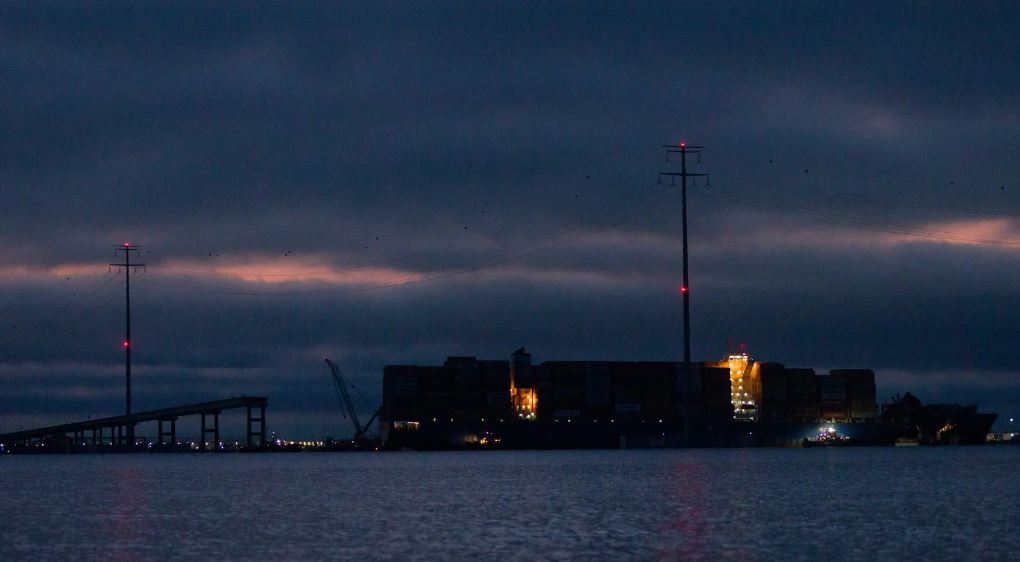Nearly eight weeks after colliding with the Francis Scott Key Bridge, the container ship Dali is afloat again. Initially scheduled to start moving at 5:30 a.m., the operation began over an hour later, with the ship surrounded by tugboats as it embarked on a two-and-a-half-mile journey back to Baltimore.
The Dali’s relocation is a crucial step towards fully reopening the main channel to the port, which had been blocked since March 26. On that day, the Dali lost power and hit the bridge, causing it to collapse. The incident resulted in the deaths of six workers repairing the bridge roadway and filled the waterway with around 50,000 tons of metal and debris, severely disrupting one of the nation’s key shipping hubs.
The salvage and recovery operation has been extensive, involving over a thousand workers and numerous barges, cranes, helicopters, and Coast Guard cutters. Access to and from the port has been restored gradually: a temporary channel with an 11-foot depth opened on April 1, followed by other channels with depths of 14, 20, and 45 feet in the subsequent days and weeks.
While hundreds of ships have navigated these alternate routes, normal port traffic requires the reopening of the permanent channel, which is 50 feet deep and 700 feet wide. Authorities aim to have this channel open by the end of May.
Moving the 947-foot-long Dali is a complex and risky task, given that the ship was pinned in place by thousands of tons of twisted steel. Crews removed 182 of the 4,700 containers on the ship, some of which were entangled with the wreckage of the bridge. Last Monday, small explosive charges were detonated around a massive section of the bridge lying across the Dali’s bow, sending the section into the water beneath a plume of black smoke.
Over the following week, sonar specialists and dive teams inspected the area around the ship for submerged and unstable wreckage, with cranes removing debris that could pose a risk. Final preparations to move the ship began Sunday afternoon, involving the release of mooring lines, lifting of anchors, and removal of some of the hundreds of thousands of gallons of water that had been pumped into the ship as ballast for stability.
Once the Dali reaches the dock, it will undergo repairs and further inspections as federal investigators continue to determine the cause of the accident and potential liability. A preliminary report by the National Transportation Safety Board (NTSB) last week found that the Dali had experienced at least two electrical failures hours before leaving port. These outages likely contributed to the accident, which occurred when the vessel’s electrical circuit breakers tripped, causing a loss of propulsion and steering capacity, according to the NTSB report.
The crew will remain onboard the ship after it docks. The containers still on the Dali will be offloaded at the port, and Maersk, the shipping company that chartered the ship, will arrange to have the cargo delivered to its customers through alternative means.
The incident underscores the significant challenges faced in maritime operations and the complexities involved in salvage efforts following such large-scale accidents. The successful movement of the Dali marks a pivotal moment in the recovery process, bringing the Port of Baltimore closer to restoring its full operational capacity.
The full reopening of the main channel is essential not only for local commerce but also for the broader national economy, as the Port of Baltimore is a critical hub for the movement of goods. The efforts to clear the channel and move the Dali demonstrate the coordination and resilience of the involved teams, paving the way for a return to normalcy in one of the nation’s busiest ports.

